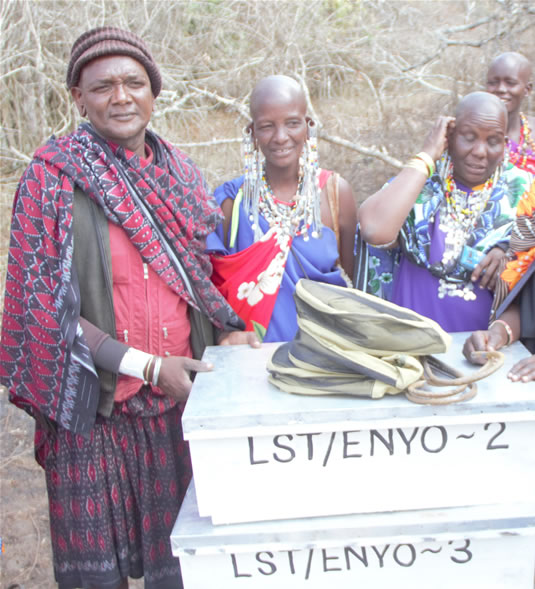3. Programme Strategy:
i) To demarcate, register and title pastoral key resources such as land, pasture, water, salt licks and browsing resources;
ii) To formalise rights to land and existing use of natural resources owned by
agro-pastoral communities in taraget areas;
iii) To enhance the security of pastoral livelihoods for communities living in Longido, Simanjiro, Monduli and Kiteto Districts;
v) To support court cases in which some target communities contest their rights to land in courts;
vi) To raise awareness of the pastoral communities on land rights;
4. Community Resource Utilisation and Management
Once legal ownership is secured, the National Land Policy stipulates that security of land in Tanzania depends on usage. The land use programme is therefore meant to consolidate titles already secured and its specific objectives are:
5. Strategic Objective 06.2
To consolidate rights over land through undertaking sustainable natural resources utilisation and management plans
Strategy
To achieve this specific objective of developing sustainable land use and management plans for the target villages, ALARI adopted a two-tier approach. First, it seeks active involvement of communities in the assessment and developing realistic resource management plans; secondly, to assist communities to involve government agencies and NGOs in the process of resource assessment and preparation and implementation of Community Resource Management plans.
With regard to the planning, Participatory Rural Appraisal (PRA) techniques are applied. PRA enables rural communities to participate in assessing resources, and preparing and implementing Community Resource Management Plans. ALARI’s role is to provide the framework within which community institutions – including local leadership, government organisations and NGO can be strengthened. One of the ways to achieve this is by introducing appropriate technology that village groups can use GPS on mobile phones to map own natural resources and use village land acts of 1999 framework to regulate use and manage natural resources.
The role of ALARI is that of a catalyst, taking a pro-active approach by assisting the communities to involve those institutions already present in the area emphasizing their responsibility and participation in the whole process of achieving sustainable resource management plans.
6. Action Items
Under this strategy the following programme activities will be undertaken:
i) To empower communities in order to obtain governance over their resources, which will lead to sustainable community resource utilsation and management.
ii) To improve the resource base of the pastoral communities in Maasailand and enhance livestock productivity while promoting sustainable pastoral development.
iii) To reduce conflicts related to incompatible resource utilisation, especially between agriculture and pastoralism, and pastoralism and wildlife conservation.
iv) To strengthen collective titles which villages obtained and enhance the security of resources that are vital for pastoral livelihoods.
v) To enhance pastoral household food security.
v) To promote gender equity in access and control over productive resources.
vi) To increase land productivity while preserving the environment.
vii) To promote cross boarder grazing and sharing of key resources
2. Programme 4: Transformation of Pastoralism and Animal health
2.1 Operating Context
As livestock is the key economic resource for the pastoralist communities, ALARI sees support to the livestock sector as a condition for enhancing security of resource tenure and keeping pastoral lands for use by pastoralism.
2.2 Strategic Objective
To improve the health and quality standards of livestock resources and ensure that livestock resources are developed and used sustainably for high productivity, production, contribute to optimal economic growth, well being and sustainable livelihoods.
2.3 Strategy
To improve animal health and enhance livestock production and productivity
To maximise the potential of livestock for poverty alleviation among pastoral resource poor households and enhance household food security;
To develop and promote improved livestock breeds;
To develop, improve and promote livestock husbandry practices;
To develop and promote forages and improved feeds and feeding systems;
To develop robust and sustainable forage seed systems;
To improve and maintain livestock health and food safety;
To develop and upscale best practices in handling of livestock and livestock products;
To support the development of processing and value addition of livestock products;
To document, adapt and promote approved Indigenous Technical Knowledge (ITK) on livestock;
To initiate and maintain repository of animal genetic resources.
To train para- vets/para-professionals who will work at community level to improve animal health;
To restock resource poor households;
To train women in processing livestock products such as hides and skins, milk, ghee and butter.
To train livestock keepers in land rights, land management, pasture management and water management.



